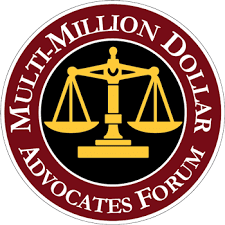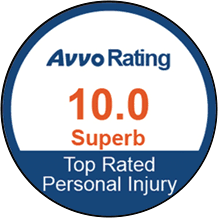Erb's Palsy
Parents of children with Erb's palsy should contact an Erb’s palsy lawyer in NYC as soon as possible to help determine if their child’s condition is the result of medical negligence. Erb's palsy (also called brachial palsy) is a birth injury that causes weakness or loss of movement in the arm. Infants are typically diagnosed with Erb's palsy after sustaining an injury to a bundle of nerves in the shoulder known as the brachial plexus. The injury typically occurs when excessive traction is placed upon the upper trunk of the C5, C6 and C7 nerves, known as the brachial plexus. Erb's palsy can be caused by a number of different factors, including excessive pulling on the baby’s shoulders or arms during birth. Furthermore, breech deliveries and the birthing of large infants have been known to increase the odds of a child being born with Erb's palsy. In some cases, Erb's palsy can be avoided if the doctor recognizes the signs of an at-risk infant before birth and orders a Caesarian section.
In an Erb's palsy lawsuit, parents can recover compensation for any past and future medical bills resulting from the injury, damage to the infant's future earning potential and pain and suffering. Our Erb’s palsy lawyers understand the difficulties placed upon an infant and their family following an Erb's palsy diagnosis. While we cannot heal the emotional pain that is caused by a birth injury, we do what we can to lessen the financial burden. As a result, we look to secure maximum compensation for all of our clients who have a child born with Erb's palsy.
What Causes Erb's Palsy?
Erb's palsy is an injury to the brachial plexus, which is a network of nerve fibers running from the spine. Erb's palsy occurs when the nerve roots in the lower cervical spine (C5, C6 and C7) are stretched as a result of excessive lateral traction (force applied at an ear-to-shoulder direction) to the baby's head and neck. The brachial plexus can become stretched during birth when an infant's shoulder becomes impacted or stuck on the mother's pubis symphysis or sacral promontory (pelvic bones); this is referred to as shoulder dystocia. With the shoulder thus immobilized, lateral traction to the baby's head and neck can cause stretching and damage to the brachial plexus, resulting in Erb's palsy.

When a baby suffers shoulder dystocia, it is an obstetrical emergency. In order to prevent Erb's palsy, shoulder dystocia must be immediately recognized and addressed. Various maneuvers are used to free the impacted shoulder and resolve the dystocia, the most common of which is called the McRoberts maneuver, where the mother's knees and hips are flexed toward her head. Additionally, there are many other maneuvers which can be used to resolve shoulder dystocia and are available and described in medical literature.
While shoulder dystocia most commonly involves the anterior shoulder, it can also occur in the posterior shoulder. In either scenario, a shoulder becomes stuck thereby denying forward or outward movement of the affected shoulder. With the shoulder thus immobilized, if the doctor or other health professional delivering the baby applies excessive force to the head or neck in an effort to deliver the baby, the nerves can be stretched and injured. The application of downward traction or force is commonly used to deliver the anterior shoulder, followed by upward traction to guide the posterior shoulder out. The traction used is generally very gentle. If too much force is used, however, the nerves can be irrevocably injured.
When Is Erb's Palsy The Result Of Medical Malpractice?
Studies have consistently shown that most clinicians underestimate the actual force they apply to the baby's head and neck. Studies also show that during the birthing process, the doctor or other medical professional performing the delivery applies a wide range of force corresponding to varying degrees of difficulty in the delivery. Researchers conclude these findings indicate that the first reaction of the person performing a difficult delivery is to exert considerably larger force than he or she would otherwise use. Add to this the fact that the diagnosis of shoulder dystocia is based upon the judgment of the person delivering the baby. Because there is no clinically accepted definition for the diagnosis, its reported incidence could grossly underestimate its actual incidence. In fact, 1 study showed that 51% of the deliveries studied that required maneuvers utilized for a shoulder dystocia did not document shoulder dystocia in the medical record. More problematic, given the inability of clinicians to accurately assess the amount of force they are applying, it is likely that more force is being exerted to the head and neck than may generally be acknowledged.

When the Erb's palsy occurs due to a doctor's negligence, it may be the result of medical malpractice. For instance, should Erb's palsy occur because the doctor used too much force or failed to recognize the shoulder dystocia, they may have acted negligently and could be liable for any lasting physical damage caused to the infant. Thankfully, most cases of Erb's palsy are transient and resolve within the baby's first year of life. Unfortunately, however, there remain cases of permanent Erb's palsy. It is well-recognized that effectively all of the permanent Erb's palsy cases are related to shoulder dystocia-complicated births.
Our Erb’s Palsy Lawyers In NYC Have A History Of Successfully Proving Negligence
As discussed, there is no objective or generally accepted definition of shoulder dystocia. Nor is there a way to clinically measure the force being applied to the baby's head and neck during delivery. In many instances, the hospital record makes no reference to shoulder dystocia or to any complication during the delivery. The delivering clinician will invariably testify that he or she used only the gentlest traction to help guide the baby out. Yet, to prevail in these types of malpractice cases, the plaintiff must demonstrate a departure from generally accepted practice – meaning, in this context, that the clinician applied excessive lateral force to the baby's head. The excessive force must have been applied because either the medical provider failed to recognize a shoulder dystocia or because they failed to simply recognize the amount of force being applied.
In an example of such a case, our Erb’s palsy attorneys successfully obtained a significant award and life-time medical care for a child with Erb's palsy. The delivering obstetrician denied that shoulder dystocia or any other delivery complication occurred. The hospital records made no reference to shoulder dystocia or other complication. The obstetrician further testified that only a gentle "sweeping" motion was applied to the baby's head and neck during delivery. The baby was born without any signs of intrauterine distress: his APGARS (Appearance, Pulse, Grimace, Activity and Respiration) were 9/9; there was no bruising or mottling to his skin; his blood work was normal; and his muscle tone was good. The baby, however, undisputedly had a permanent Erb's palsy. Our Erb’s palsy lawyers were able to show that according to the accepted science and medicine, this injury had to have occurred due to excessive lateral force during delivery, notwithstanding the hospital record and defendant's testimony.
In other cases of Erb's palsy, the delivering clinician will document shoulder dystocia and the maneuvers used to resolve it. He or she will then defend the Erb's palsy case by saying the injury could not have been avoided. Given that the plaintiff must prove a departure from accepted practice, the plaintiff's attorneys must prove, based on accepted science and medicine, that shoulder dystocia itself, even with appropriately performed maneuvers to resolve it, is insufficient to cause a permanent Erb's palsy. Rather, it is the application of excessive lateral force that results in the nerve damage which causes permanent Erb's palsy.
How Do I Schedule A Legal Consultation Regarding Erb’s Palsy Malpractice?

If your child has suffered Erb’s palsy due to medical malpractice, you may be entitled to compensation. For a free consultation with our Erb’s palsy lawyers in NYC, call our Manhattan office at 212.406.1700, our White Plains office at 718.892.0400 or contact us online. We will review your case and discuss your legal options with you. The attorneys at Queller, Fisher, Washor, Fuchs & Kool take all cases on a contingency fee basis, meaning our services are free of charge unless there is a monetary recovery. Our law firm is proud to serve the New York City area, including the Westchester, Brooklyn, Manhattan, Queens and Staten Island, as well as the surrounding counties and New Jersey. We offer legal services in English, Spanish, Portuguese, and Chinese.